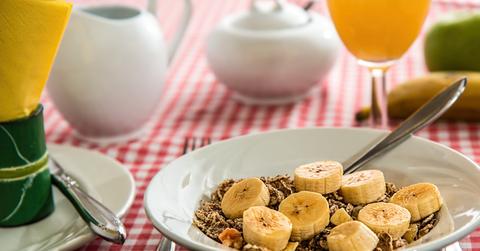Scientists Discover New Way To Save Bananas From Going Extinct
Could bananas become extinct again? That's what James Dale, an Australia professor and scientist, is hoping to avoid as he research hows to prevent the fruit from falling under another wave of Panama disease called "Tropical Race 4."
Updated May 23 2019, 10:44 a.m. ET
Over 50 years ago, bananas were temporarily extinct. Even though we tend to just call them “bananas,” there’s actually different species of the fruit available. Why? In short, the Panama disease that spread in 1965 contaminated much of the banana plantations that grew one species used for worldwide exporting at the time. The plantations had to be burned down and eventually a new, alternative banana that was immune to the disease became popular. With a new strain of the disease threatening the current version of banana that's most well known, scientists may have found resistant genes to keep the fruit alive.
The type of banana most of us eat now is called the Cavendish. Prior to becoming the dominant version, people ate a better, longer-lasting banana called the Gros Michel. By comparison, the Cavendish is still a tasty fruit, but it’s a clone of any other banana in the species. While it’s been the recent favorite, a new strain of Tropical Race 4 (TR4), a fungal disease, is affecting the Cavendish cultivar at a rapid pace.
The TR4 disease is a wicked one, as once it shows up in a banana plantation, the entire plantation needs to be burned down to start fresh. It’s wiped out numerous plantations in South Asia, Australia, Africa, and the Middle East as it continues to spread rapidly across the world. The United States gets most of their bananas from Latin America, and it’s only a matter of time before the disease reaches there, too.
All hope isn’t lost for the Cavendish banana fruit, though. A professor from the Queensland University of Technology in Australia, James Dale, has been researching how to get rid of this disease for many years. He’s discovered that a wild banana species, called “Musa acuminata,” features genes that are immune from TR4 destruction. These bananas have been found in Malaysia and Indonesia, where the disease has already struck.
What Dale has done is taken the genes that make the wild banana immune to the disease and placed it in a Cavendish banana. It was a better approach than taking genes from other plants and insects that he was doing in earlier research. According to Tree Hugger, the results have been very successful as “four of six plant lines cultivated from a single cell showing resistance after researchers grew them and introduced TR4.”
Why do we not just grow more of the “Musa acuminata” banana species? The Cavendish has been a favorite for decades now and the industry hasn’t shown much support for Dale’s research. Not many scientists outside of Dale have been focusing on the problem.
The Washington Post said that Dole Food, one of the biggest distributors of bananas, was “looking at how to develop a disease resistant banana through crop improvement and plant breeding methods.”
Bananas remain very cheap in the United States, making them a healthy and affordable option for many families. While Dale may have the solution, it still has to go through further testing on a large scale. We’ll see if it’s enough to save the future of the banana industry.
